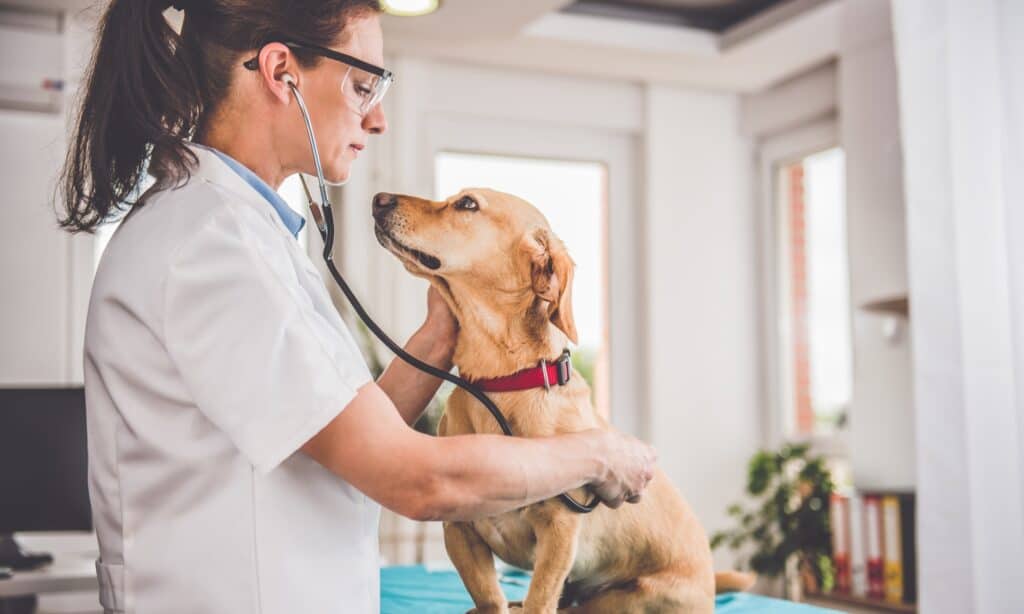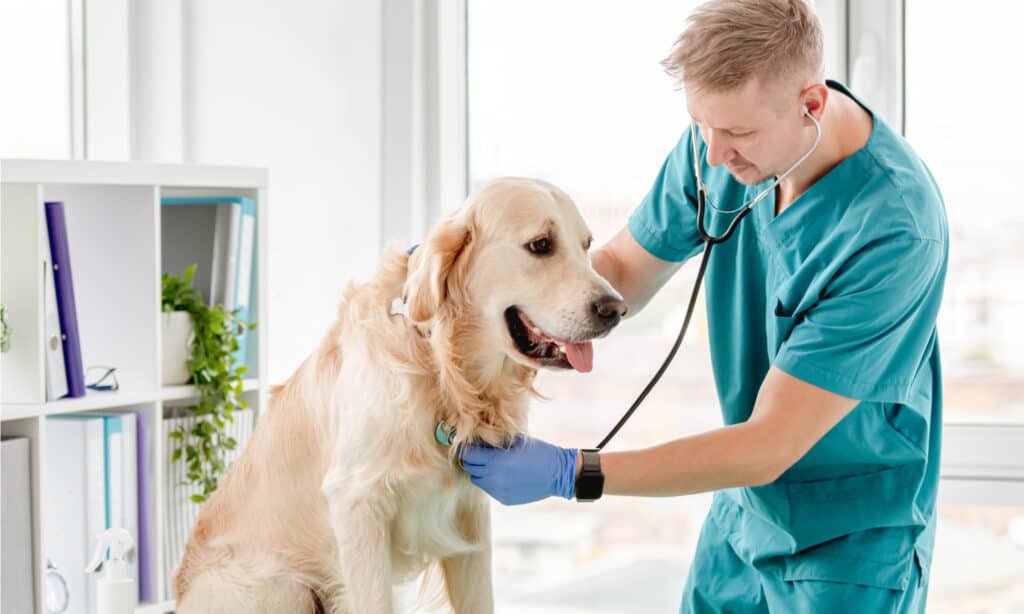Keeping our pets healthy is part of showing them how much we care. Regular vet visits, proper nutrition and plenty of exercise are important for every dog. Even with the best care, a dog can get sick and sometimes dogs can come down with sepsis. What is sepsis? How do dogs get it? What symptoms should you watch for if you think your dog has sepsis? How can you prevent your dog from getting sepsis? Let’s find out.
What is Sepsis in dogs?

Sepsis is an infection in the bloodstream also called blood poisoning.
©iStock.com/Kerkez
Sepsis is a bacterial infection in the bloodstream. It is sometimes called blood poisoning. If a small amount of bacteria enters the bloodstream, it is called bacteremia. If the body cannot fight these off, it can get worse and upgrade to Septicemia (Sepsis). This requires aggressive treatment, but if the treatment doesn’t work or no treatment is given, it can escalate to septic shock, which is extremely life-threatening. Sepsis is usually caused by bacteria but can occasionally be caused by viruses, parasites and fungi.
How do dogs get Sepsis?
The most common way dogs get sepsis is from E. coli. Dogs can get E. coli from eating contaminated food. Watch for recalls of dog food and dog treats. Be careful what you feed your dog, and be aware that there is an increased risk of E. coli in uncooked meat. Always wash fruits and vegetables before giving them to your dog. Don’t let your dog drink from standing water like muddy puddles or ponds; these can contain harmful bacteria. Other ways dogs can get sepsis include:
- Kidney Infection
- Pneumonia
- Bacterial infection after dental work
- Ruptured intestine from cancer or swallowed object
- Urinary tract infection
- Severely infected wound like from a bite or abscess
Dogs with weak immune systems or other health issues like diabetes or liver disease are at higher risk of developing sepsis.
What are the symptoms of Sepsis?

Take your pet to the vet if your dog has symptoms.
©Javier Brosch/Shutterstock.com
If you notice sluggish behavior in your dog or they are “just not themselves”, review these symptoms to see if something may be wrong:
- Loss of appetite/not eating
- Diarrhea
- Vomiting
- Drooling
- Panting
- Lethargy
- Fever
- Abdominal pain
- Difficulty breathing
- Fast heart rate
The most common form of sepsis starts as a G.I. problem. The first three may be the initial signals that something is wrong.
What should you do if you think your dog has Sepsis?
Sepsis is serious, so you need to get your dog to a vet right away. The vet will run a series of tests to figure out what is wrong and what the best course of action is.
What tests will the vet perform to test for Sepsis?

The vet will perform a series of tests to determine what is wrong.
©Tatyana Vyc/Shutterstock.com
The vet will perform a full physical exam, blood tests and urine tests. If the dog has a wound like a bite from another dog, the tissue around the wound can be examined for bacteria. An EKG can be performed if there is a questionable heart rate. If there are G.I. issues, an ultrasound can be done. If your dog has pneumonia, the vet may do a chest X-ray. Remember that sepsis can affect the whole body, so finding the source of the infection is important.
How is it treated?
The first step is usually to give the dog antibiotic or multiple antibiotics to start fighting the infection. As the vet gets more test results back, they can tweak it so that the correct antibiotic is given. Some dogs may require an IV, so they can be given fluids to avoid dehydration. Other dogs may need to have a feeding tube put in, especially if the infection is in the G.I. tract.
Dogs that do not respond to the anti-biotics and treatments may go into septic shock and would need to stay at the hospital until stable. The vet would watch the dog very carefully and give aggressive IV antibiotics.
Is Sepsis life-threatening?

Sepsis is a serious infection and needs immediate veterinary care.
©fongleon356/Shutterstock.com
Yes. Sepsis is life-threatening. Sepsis is a serious infection of the blood which affects the whole body. The dog’s organs like the heart, lungs, liver and kidneys are all compromised. As the body tries to fight the infection, a lot of strain is put on these organs. Early treatment of any suspected infections or exposure to bacteria is very important. Seek immediate veterinary care if your dog has any of the symptoms.
What is the survival rate for dogs with Sepsis?
While most cases of bacteremia can be fought off by a healthy dog, dogs with compromised immune systems or other health conditions can be at risk. If the body can’t fight the bacteria, it can spread to the bloodstream and result in sepsis. The survival rate for dogs with sepsis is around 50%.
How can you prevent your dog from getting Sepsis?

Be sure to give your dog a healthy diet and avoid raw or undercooked meats and unpasteurised products.
©stockcreations/Shutterstock.com
There are a few things you can do to help prevent sepsis. First, be sure to watch what your dog eats and drinks. Avoid any contaminated foods, raw meats and contaminated water. Don’t risk giving your dog unpasteurised dairy like milk or cheese. If your dog has dental work at the vet, ask to have a round of antibiotics as a cautionary measure. If your dog gets injured and has a wound, be sure to clean the wound and follow your vet’s recommended wound care. Some antibacterial ointments come in a spray which is sometimes easier to apply. You may need to get a protective cone so the dog doesn’t chew the wound area.
What are researchers doing to help save dogs with Sepsis?
Research continues to try to save more patients that reach the sepsis stage and to prevent dogs from going into septic shock. Researchers are looking at Early Goal-Oriented-Therapy (EGOT), which may be a way to improve survival rates. They emphasised the importance of early diagnosis and quick administration of fluids and antibiotics. Remember, most healthy dogs can fight off infections on their own, but take your pet to the vet if you suspect anything is wrong.
The photo featured at the top of this post is © Andy Gin/Shutterstock.com
Ready to discover the top 10 cutest dog breeds in the entire world?
How about the fastest dogs, the largest dogs and those that are -- quite frankly -- just the kindest dogs on the planet? Each day, AZ Animals sends out lists just like this to our thousands of email subscribers. And the best part? It's FREE. Join today by entering your email below.
Thank you for reading! Have some feedback for us? Contact the AZ Animals editorial team.






